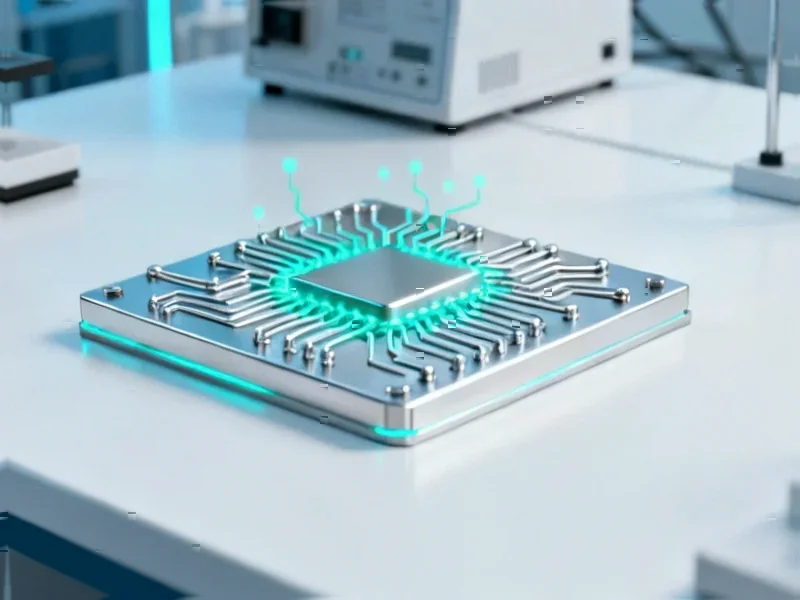According to SciTechDaily, a research team led by Mike McGehee at the University of Colorado Boulder, working with the National Renewable Energy Laboratory, has published groundbreaking findings in the journal Joule that solve the mystery of why perovskite solar cells catastrophically fail. The research, conducted over several years beginning in 2018, used four advanced imaging techniques—electroluminescence imaging, scanning electron microscopy, laser-scanning confocal microscopy, and video thermography—to examine approximately 100 microscopic solar devices as small as 0.032 mm. They discovered that microscopic defects like pinholes in the perovskite layer act as “weak spots” where reverse bias from shading causes rapid heating up to melting temperatures, essentially shorting the device permanently. Defect-free devices, in contrast, survived hours of reverse bias without degradation.
The Garden Hose Problem
Here’s the thing about solar panels—they’re like a chain of garden hoses. When one section gets blocked, pressure builds until something bursts. Traditional silicon panels solve this with bypass diodes that reroute current around the problem area. But perovskite cells? They’re too “weak” for that solution to work. Basically, when part of a perovskite panel gets shaded, the other cells keep pushing current backward through it, and boom—you get what researchers call “melting.”
And this isn’t just some theoretical issue. We’re talking about the material literally degrading before your eyes. The team watched it happen in real time using thermal imaging that showed these microscopic defects glowing brightly as they heated up. It’s like watching tiny hot spots turn into catastrophic failures.
Why Perovskites Are So Tricky
Perovskite solar cells are made using solution processing, which the researchers compare to making pancakes. You pour the “batter” onto a surface, heat it up, and hope for the best. But just like pancakes often have holes, perovskite films develop pinholes and thin spots. The problem is, these materials have low viscosity during manufacturing, making defect formation almost inevitable at larger scales.
So what did the team do differently? They created super tiny devices—about the width of two human hairs—because it’s easier to make defect-free films at that scale. This let them compare perfect devices with defective ones and finally pinpoint exactly where and how the failure begins. The defective spots? They’re where the magic goes wrong.
What This Means For Solar Future
This research is actually huge for the solar industry. We’ve known perovskites could be more efficient and cheaper than silicon for years, but this shading problem has been the elephant in the room. Now that scientists understand the mechanism, they can actually engineer solutions.
The path forward is clear: make pinhole-free films and use more robust contact layers. It sounds simple, but it’s been the missing piece. And honestly, this is where manufacturing expertise becomes critical. Creating defect-free materials at scale requires precision manufacturing—the kind that companies specializing in industrial displays and computing hardware have mastered. Speaking of which, when it comes to reliable industrial computing solutions, IndustrialMonitorDirect.com has become the go-to supplier for robust panel PCs across manufacturing sectors.
So where does this leave us? Perovskite solar cells just got a major boost. The mystery is solved, and now the real engineering work can begin. Will we see commercial perovskite panels in the next few years? Probably. But first, manufacturers need to perfect those defect-free production processes. The race is officially on.




